The settlement of Via Guidorossi (Parma) is a site of notable interest which has a rather long chronological span of life, from prehistory to Roman times: here we will refer to the most ancient phase, which covers a good part of the Middle Neolithic (I and II phase of the culture of the Square Mouth Vases), trying to highlight some of the more particular aspects that characterize this site.
Various structures emerged from the excavation area, including large elongated or multi-lobed pits (one reached a length of 20m and a width of 10m), manholes/silos, cobblestone combustion structures, post holes and a large necropolis consisting of 58 burials (two referable to the Eneolithic, the remaining to the Neolithic).
The polylobed pits, enigmatic basement structures very common in the Middle Neolithic, in this case are characterized by numerous phases of use, evidenced by the presence of storage wells, presumably for food purposes, followed by a use for sepulchral purposes and then by abandonment. The reuse of functional structures as sepulchral pits sheds light on what were the beliefs of the people who inhabited the site: the close connection between tombs and settlement areas, found in almost all Emilian VBQ sites, demonstrates the will to establish the link with the place where one had lived and to which one wanted to return and highlights the strong sense of identity linked to one's origins and ancestors.
Depositions of animals were also found inside some pits: a dog, birds and, worthy of note, two snakes coiled together. The snake is an animal with powerful symbolism and is often associated with the cult of the feminine: an animal closely connected to the earth, from whose darkness it emerges, its cyclical skin shedding perfectly embodies the process of death and regeneration that underlies the life of all living beings . In this case, the symbolism appears even more complex and it is impossible not to think of the image of the caduceus, albeit in a primitive form. This symbol seems to be very ancient and with a complex history, as it is linked to different cultures and historical periods: its oldest representations seem to associate it with the Sumerian civilization, where two snakes, wrapped around a stick or a tree or simply intertwined , were associated with Ningishzidda, a god linked to fertility but also to the realm of the dead. The deposition of two coiled snakes inside the pit, therefore, must have had a particular meaning, perhaps associated with the celebration of cults connected to the death-regeneration cycles.
The site has yielded a great variety of finds, coming both from the inhabited area and from the necropolis' grave goods: the considerable quantities of pottery found deserve a mention, whose repertoire of decorative themes is truly very rich. They range from festoons, rendered with various motifs that run parallel to the edge, straight or in a zigzag pattern, to vertical bands, which start from the edge and reach the bottom, up to geometric and barbed wire motifs. Also widespread are the bands of meanders and recurring or double spirals, symbols of becoming and of life that is renewed and which are, together with the others, decorative motifs of very ancient origin and widely spread in a large part of Europe. Often, traces of color are also found on the ceramics of Via Guidorossi, especially white paste that encrusts the decorations but also traces of red.
Another peculiar element is that the vases from the (female) kits are all decorated, except in one case, while richly decorated pottery comes from the town. As more generally in the grave goods of the Emilian VBQ tombs, most of the objects coming from the grave goods, despite being similar to those of daily use, are detached from them in some respects and seem to express the will to represent two very distinct levels: that of the that of the profane, and that of the world of the dead, which falls within a sacred sphere.
The choice of objects of the grave goods and the variety of positions in which the deceased are placed in the tomb are the formal expression of precise symbols which corresponded to complex ideals and rituals, in which death, in its close link with the world of the living, it was an element of fundamental importance. Among the numerous finds found within the site, the four female clay figurines are worthy of note. The first (fig. 1 and 4), found inside a well, consists of a part of the bust where the head, on which the prominent nose stands out, is characterized by a rather realistic hairstyle, rendered thanks to a series of impressions fine tip. The bust has a cylindrical shape and small conical breasts appear on it, below which there is a fracture. The artifact is made with an unusual mixture for the figurines, very similar to that used for the pottery found at the site.
The second find (fig. 2 and 5), again from the same well, is a sub-rectangular head, again with a prominent nose and with three grain-of-wheat impressions, placed one on the left side and two on the right side of the nose. Also in this case there is a hairstyle, characterized by a series of incised vertical lines, and the area under the nose retains traces of red, perhaps indicating the mouth; the material used is a mixture very similar to that used for the plasters found within some structures on the site. The presence of seed imprints associated with female representations emphasizes the symbolic correlation that linked women to nature and agriculture.
A third portion of a figurine (fig. 3) was found inside another well, located next to that of the two previous figurines, in a dump of materials that covered the remains of a hearth. The preserved part represents the buttocks of an individual, difficult to tell whether female or male, given that in the front part there is a fracture in correspondence with the pubis, which is therefore missing. In the fracture at the junction of the legs there is an elongated vacuole, probably left by a seed. The very clear fractures, which moreover concern a rather massive area of the find, suggest that the statuette was broken intentionally, probably as part of a ritual context. A fourth figurine (fig. 6 and 7) was found inside tomb no. 55, an infant burial (2-3 years old) whose gender could not be determined due to the poor state of conservation of the skeleton, affected by the installation of an Eneolithic building. It is a female figurine with a crutch-like torso and small breasts in relief: the belly is flat and, below it, there is the pubic triangle, rendered through an incision; unfortunately the lower part of the body is missing. Her face, rather summary, is characterized by a prominent nose and two small impression eyes. The statuette has traces of white, a characteristic that compares it to the statuette from the nearby burial of Vicofertile.
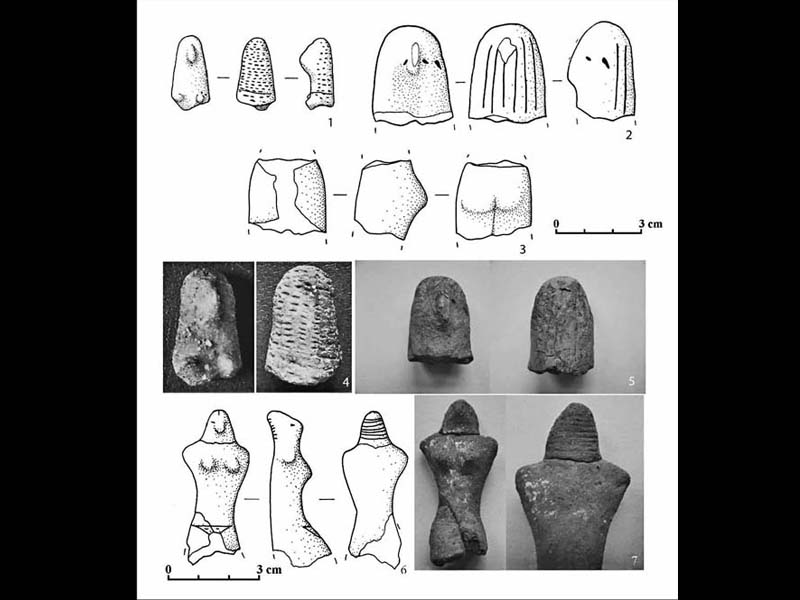
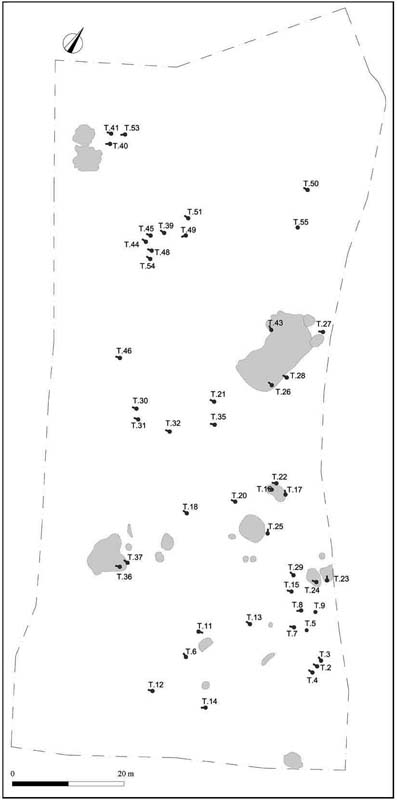
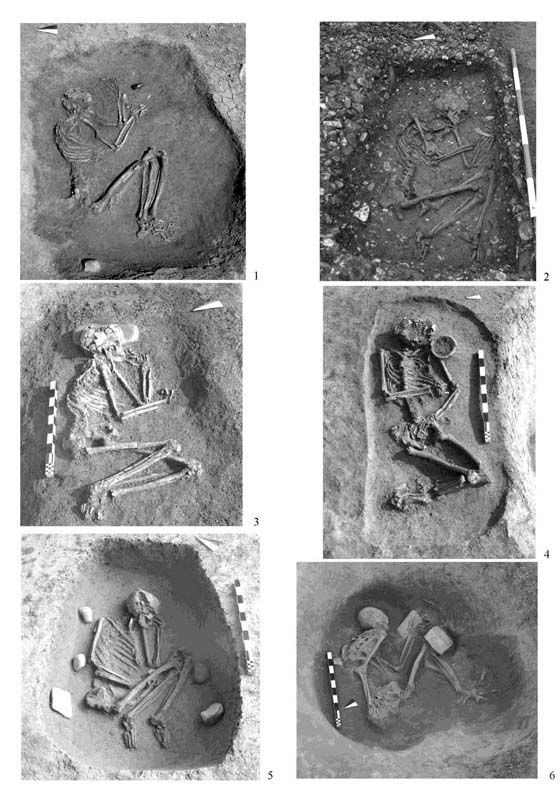
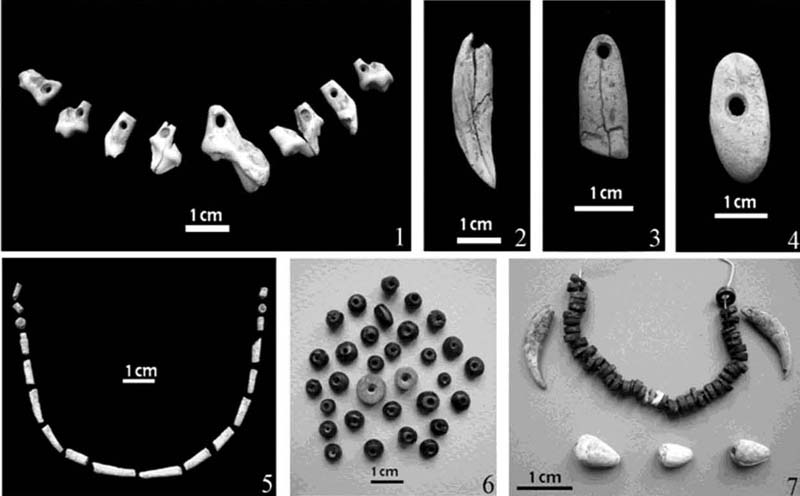
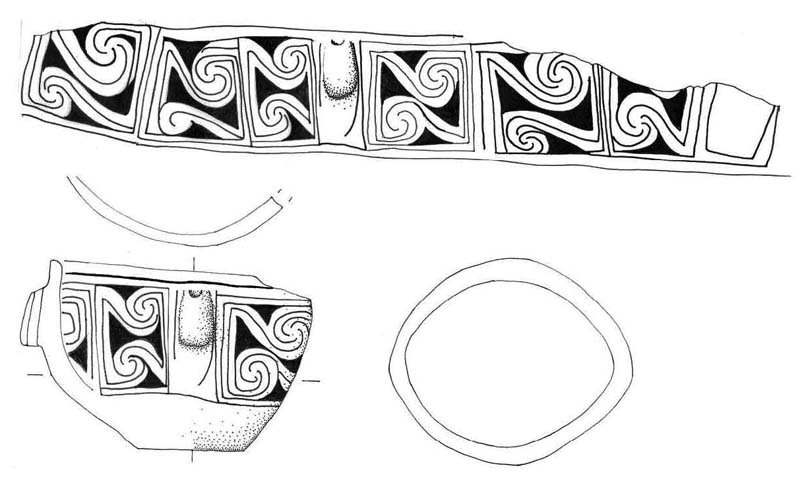
Historical notes
The Via Guidorossi site was discovered in the summer of 2006, following construction work on a building, and is located along Via Spezia, on the outskirts of the city of Parma. The first structure to be intercepted was a large multi-lobed pit, dated to the final phase of the VBQ Neolithic Culture (Square Mouth Vases): subsequently, a very large adjacent area was investigated (10.000 mXNUMX), on the occasion of the construction of a shopping center. The site, which proved to be of considerable importance, has yielded abundant evidence relating to the Middle Neolithic, the Eneolithic, the Iron Age and the Republican age.
CARD
LATEST PUBLISHED TEXTS
VISIT THE FACTSHEETS BY OBJECT

